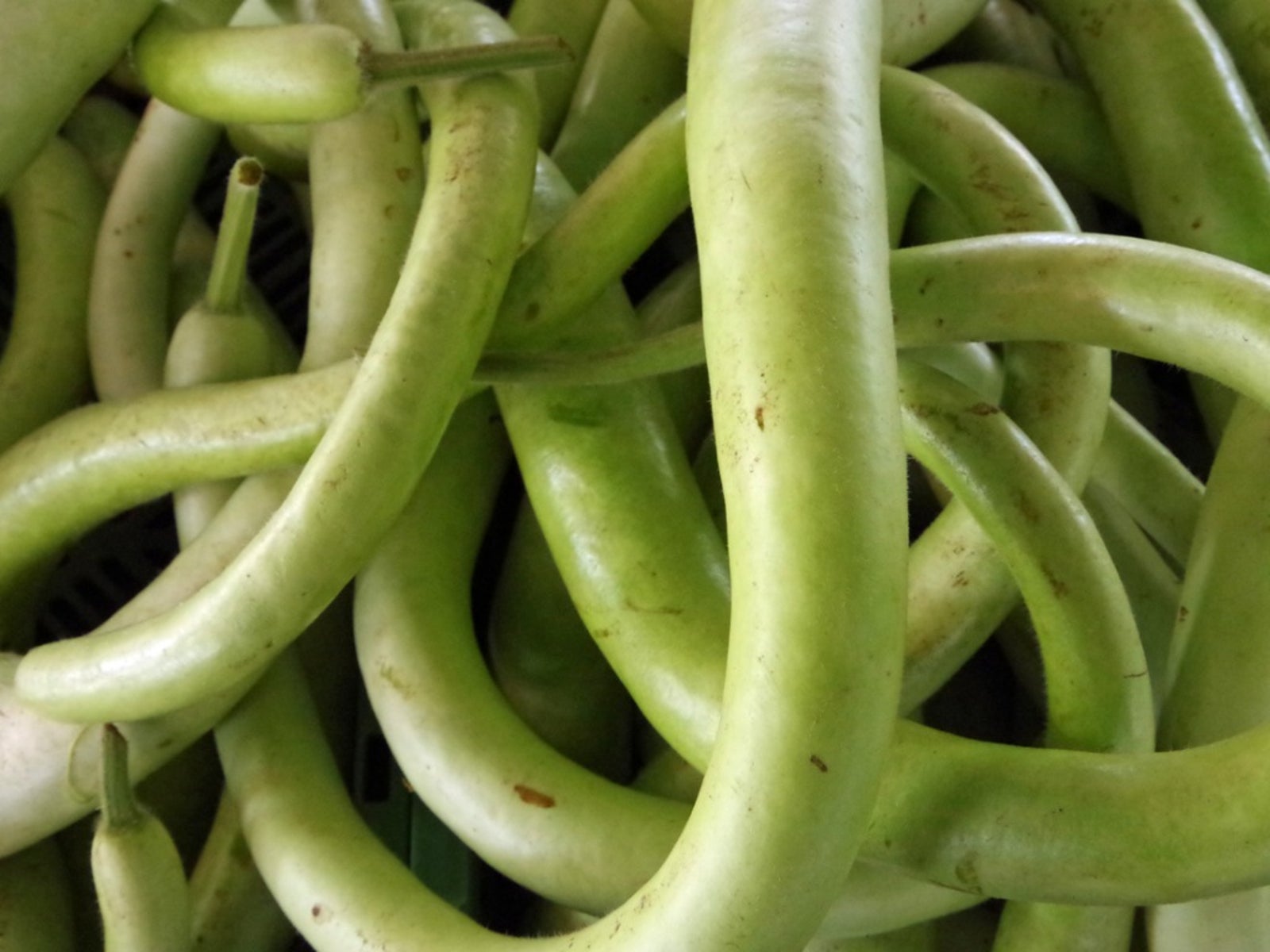Cucuzza Squash Plants: Tips On Growing Cucuzza Italian Squash

A favorite squash of Sicilians, cucuzza squash, meaning ‘super long squash,’ is gaining some popularity in North America. Never heard of cucuzza squash plants? Keep reading to find out what a cucuzza squash is and other information about growing cucuzza Italian squash.
What is Cucuzza Squash?
Cucuzza is a summer squash in the botanical family of Lagenaria, which boasts a plethora of other varieties. This edible squash is related to the calabash, also known as water gourd or bird’s nest gourd. A vigorous squash, fruit is born from vines that can grow 2 feet (61 cm.) a day. The fruits are straight, green gourds, occasionally with a minor curve to them. The skin is dark green and medium hard. The fruit itself can grow 10 inches (25 cm.) per day and will be 18 inches to 2 feet (46-61 cm.) long. The squash is usually peeled, and the seeds removed from the larger fruit. The squash can be cooked just like any other summer squash – grilled, stewed, fried, stuffed, or roasted. Intrigued? I bet you’re wondering how to grow Cucuzza squash now.
How to Grow Cucuzza Squash
Cucuzza squash plants are easy to grow. The easiest method is to grow them on trellises, which will give support to the fruit, contain the rampant vines, and make for ease in harvesting. Grow this tender warm season veggie in well-draining soil with full sunlight exposure. Amend the soil with 2 inches (5 cm.) of organic compost or rotted manure. Plant two to three seeds at 2 to 3 foot (61-91 cm.) intervals along a row after all danger of frost has passed in your area. Push the seeds one inch (2.5 cm.) down into the soil. You can also plant in hills. If you use hills, plant five to six seeds with each hill spaced 4 feet (1 m.) apart. When the seedlings are 2 to 3 inches (5-8 cm.) tall, thin out to two to three of the healthiest plants. Give the squash one inch (2.5 cm.) of water per week depending upon weather conditions. Like all squash, Cucuzza are prone to fungal diseases, so water in the morning at the base of the plants. If you did not enrich the soil with manure of compost, you will need to feed the plants. Once the plants have blossomed, feed ¼ pound (113 g.) 10-10-10 for every 10 feet (3 m.) of row, three to four weeks post blossom emergence. Keep the area around the Cucuzza weed free. Cover the area around the plants with a light layer of mulch, like straw or wood chips, to aid in water retention, weed retardation, and to keep the roots cool.
Harvesting Cucuzza Squash
Timing is everything when harvesting Cucuzza squash. It’s just like zucchini. One day the fruit is a couple of inches (5 cm.) long and two days later it’s 2 feet (61 cm.) long (and that’s if you even saw the fruit). With the large shading leaves and green fruit, Cucuzza, again like zucchini, tends to keep the fruit of its labor hidden. So, look carefully and look every day. The bigger they are, the harder they are to manage, so the ideal size is 8 to 10 inches (20-25 cm.) long. Also, the younger, smaller fruit have softer seeds, which can be left in, cooked, and eaten.
Gardening tips, videos, info and more delivered right to your inbox!
Sign up for the Gardening Know How newsletter today and receive a free copy of our e-book "How to Grow Delicious Tomatoes".

Amy Grant has been gardening for 30 years and writing for 15. A professional chef and caterer, Amy's area of expertise is culinary gardening.
-
 Looking For Plants To Give You The Soft And Fuzzies? Try These 5 Fuzzy Leaf Plant Options
Looking For Plants To Give You The Soft And Fuzzies? Try These 5 Fuzzy Leaf Plant OptionsLovers of texture, drama, silver foliage and tactile plants will adore these special sensory garden additions. These fuzzy leaf plant options will leave you all aglow
By Susan Albert
-
 Get Ready For A Summer Of Hummers! Grow These Full Sun Hummingbird Plants and Flowers
Get Ready For A Summer Of Hummers! Grow These Full Sun Hummingbird Plants and FlowersIf you’re lucky enough to enjoy a sunny backyard, make sure you are maxing out on your pollinator opportunities and grow these full sun hummingbird plants and flowers
By Tonya Barnett